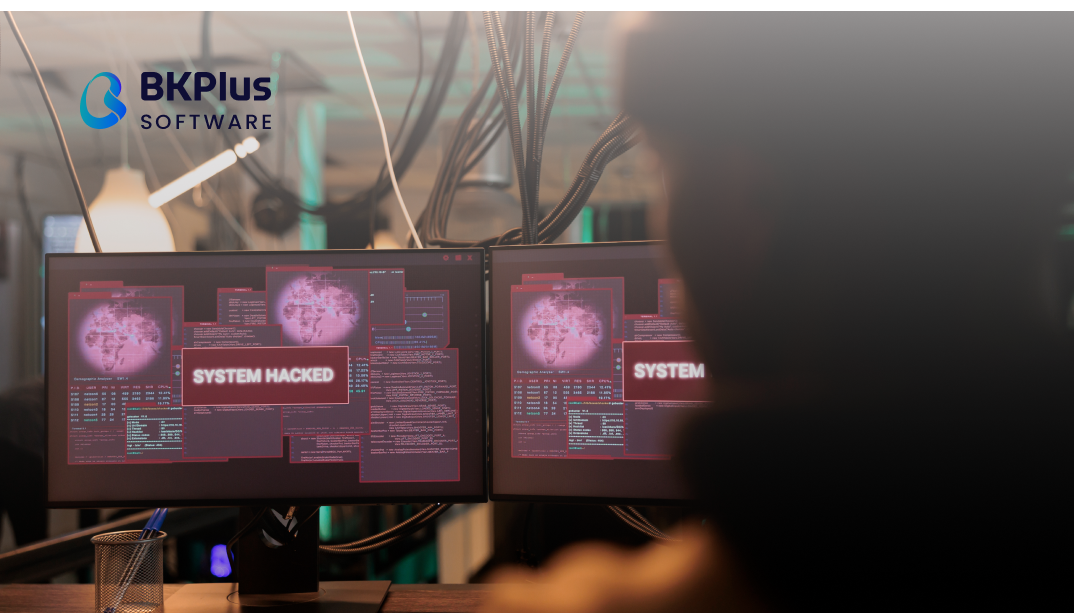In today’s digital landscape, Cyber Security Vulnerabilities pose a significant threat to businesses of all sizes. While you might think your small business flies under the radar of cybercriminals, this misconception can expose you.
This article will cover the top five security threats facing businesses of all sizes, and how organizations can protect themselves against them.
Phishing And Social Engineering
For several years, phishing and social engineering have been among small businesses’ most widespread and effective cyberattacks. In 2023, social engineering was used in almost half (43%) of all successful attacks on businesses, with 79% of these attacks being carried out via email, SMS messages, social networks, and messaging apps. This demonstrates the effectiveness of phishing attacks, which pose reputational risks and cause significant financial damage.
In phishing attacks, an attacker poses as a trusted source to trick a user into clicking on a malicious link, downloading a malicious file, or giving them access to sensitive information such as payment information or login credentials. Phishing attacks have become much more sophisticated in recent years. Attackers can carry out highly effective, fine-tuned phishing campaigns.
How To Stop Phishing Attacks
Phishing attacks continue to pose a significant threat to companies. Social engineering tactics are used to trick employees into disclosing sensitive information. BKPlus Software offers a multi-pronged approach to strengthen your defenses against these cyber security vulnerabilities.
1. Implement Phishing-Resistant Multi-Factor Authentication (MFA):
Traditional passwords are vulnerable to compromise. MFA adds an extra layer of security by requiring users to verify their identity with two or more factors, such as a biometric scan or hardware token.
Phishing-resistant MFA goes one step further and renders stolen credentials useless to attackers. Consider solutions that comply with the FIDO standard to increase security.
2. Leverage Cloud-Based Email Security with Phishing Protection:
Using a robust cloud-integrated email security solution (ICES) can be a good way to go. These solutions use artificial intelligence (AI) to analyze incoming emails for signs of phishing attempts. Common warning signs include suspicious domain names, typos, and a heightened sense of urgency in the content of the email.

In addition, ICES solutions can also extend protection to popular instant messaging platforms such as Slack and Teams. It would therefore be helpful to look out for features such as warning banners for malicious emails, automatic quarantine for suspicious phishing attempts, and user-friendly reporting tools.
3. Prioritize Security Awareness Training with Phishing Simulations:
Employees are often the biggest vulnerability in a cyberattack. Security awareness training will enable your employees to recognize and report suspicious emails.
Phishing simulations are a powerful tool for this training. Simulated phishing emails are sent directly to employees to test their ability to recognize and report these fraudulent attempts.
Ransomware And Malware
Among the various cybersecurity vulnerabilities, ransomware remains a widespread and damaging threat to organizations, especially small businesses. Malware, a broad term encompassing malicious code designed to infiltrate networks, steal data, or cause destruction, paves the way for these attacks.
Ransomware attacks usually encrypt a company’s data, making it inaccessible. The attackers then demand a ransom for decryption. This puts businesses in a precarious position: they have to pay the ransom and risk a financial loss or face having their business paralyzed due to the loss of data. The situation worsens as ransomware groups increasingly turn to sharing or withholding stolen data, causing significant damage to the company’s reputation.
Studies reveal that 71% of ransomware attacks target them, with an average ransom demand of a staggering $116,000. Attackers exploit that smaller businesses often lack proper data backups and prioritize swift recovery, making them more likely to pay.
How To Prevent Ransomware
Security tools such as cloud-based DNS web filtering solutions, secure endpoint protection, advanced detection and response, enterprise VPNs, and multi-factor authentication can be important ways to prevent ransomware and other malware attacks. Leading endpoint protection tools offer specialized ransomware features, such as ”roll-back” of devices in the event of a ransomware attack.
Another critical step in containing ransomware is the implementation of data loss prevention strategies. Data backup and recovery tools can store data securely in the cloud, ensuring that data can be restored quickly in the event of a critical ransomware incident. The benefit of implementing data backup and recovery is that in the event of a ransomware attack, IT teams can quickly restore their data without having to pay a ransom or suffer a loss of productivity.
In short, there are several methods of data backup available to businesses, so you must educate yourself on the method that is best for your organization. We recommend implementing data backup and recovery for M365 or Google Workspace if you are a cloud user, as well as more comprehensive business continuity and disaster recovery software to protect against malware and ransomware risks.
Weak Passwords
Cyber Security Vulnerabilities like weak passwords expose businesses to a significant risk of data breaches and financial losses. In today’s cloud-dependent landscape, businesses utilize numerous platforms, each requiring user accounts and potentially housing sensitive data.
Indeed, weak password practices come in various forms, all contributing to increased Cyber Security Vulnerabilities. Your employees may resort to easily guessable passwords like “password123” or birthdates. These choices are susceptible to brute-force attacks, granting unauthorized access to malicious actors. Moreover, reusing the same password across various platforms creates a cascading risk. A single compromised account with a reused password can provide attackers with a gateway to other critical systems.
Additionally, sharing passwords among team members without proper access control protocols will create a security hazard. If a team member’s device becomes compromised, attackers can potentially exploit this vulnerability to infiltrate the entire system.
How To Prevent Password Compromise
To improve cyber hygiene about passwords, organizations can use an enterprise password manager. Password managers provide an encrypted, secure ”vault” where employees can store, manage, and securely share their passwords. Password managers also allow administrators to manage password policies to ensure that team members do not compromise important data.
In addition, user authentication and access management are important means of protecting against the compromise of accounts and passwords. While MFA does not solve the problem of weak passwords, it can improve account security and ensure that unauthorized users cannot access company accounts, even if they crack a weak password.

At this point, it is worth noting that passwords are not inherently secure, and even the strongest passwords can be compromised or guessed. For this reason, many security experts recommend that organizations consider FIDO2-based passkeys to replace the password entirely.
Poor Patch Management
Patch management ensures that all your end devices (laptops, PCs, smartphones), networks, applications, etc. are equipped with the latest security updates. Outdated operating systems and software can be compromised by known vulnerabilities that cybercriminals actively seek to exploit with ransomware and malware attacks. Inadequate patch management can therefore ultimately leave your organization at risk of a data breach.
Software vulnerabilities are often made public when they are found. While development teams are quick to release patches, it can then take a long time for these security updates to be downloaded by end users. This provides cybercriminals with an excellent opportunity to exploit vulnerabilities in applications before the security patches are installed.
How To Prevent Poor Patch Management
Manually patching all the devices on your network can be a time-consuming and error-prone process. To overcome this challenge, consider implementing a Unified Endpoint Management (UEM) tool or a dedicated patch management tool. These solutions offer a range of features to optimize patch deployment and ensure the security of your systems.
In addition to patch management, you should also consider vulnerability management tools. These tools proactively scan your systems for potential vulnerabilities and allow you to identify and fix vulnerabilities before they can be exploited by attackers. This proactive approach alerts you to potential security risks earlier, so you can act quickly and minimize the potential damage.
Insider Threats
While many businesses focus on external threats, a significant cybersecurity vulnerability lurks from within the insider threat. Insiders include employees, former employees, contractors, or anyone who has authorized access to your company’s data. These individuals can exploit their access intentionally (out of greed or malice) or unintentionally (out of ignorance or carelessness), putting your employees, customers, and finances at risk.
The frequency of insider threats is increasing as more employees juggle access to multiple accounts with sensitive data. By recognizing this vulnerability and taking appropriate security measures, you can significantly improve your overall cybersecurity.
How To Stop Insider Threats
To ward off insider threats, fostering a culture of “zero trust” is critical for businesses. This fundamental principle emphasizes the concept of least privilege and ensures that users can only access the data and accounts they need to do their jobs.
The implementation of endpoint protection or Unified Endpoint Management (UEM) tools strengthens the security of corporate devices. These solutions offer comprehensive protection against various cyber threats.
To improve protection, you should also invest in special solutions for detecting and defending against insider threats. These tools use artificial intelligence (AI) and machine learning (ML) to detect unusual behaviors and events in your digital environment and uncover potentially malicious insider activity.
Conclusion
Cyber threats are a constant challenge, but you don’t have to feel defenseless. Thanks to implementing a layered approach to security, you can significantly reduce your vulnerability. This includes a solid set of security and data protection tools, as well as strong cybersecurity insurance to minimize the financial impact of an attack.
Are you ready to strengthen your business defenses? BKPlus Software offers a full range of software development services, including secure coding practices and integration of industry best security practices.
Contact BKPlus Software today for a free consultation and learn how we can help you build a cyber-resilient future for your business.



